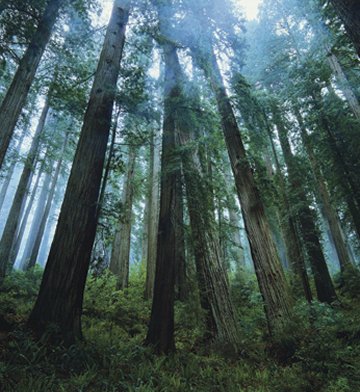Lab tests suggest that a wide variety of plants may routinely do something that scientists had previously thought impossible—produce methane in significant quantities.

Methane, like carbon dioxide, traps heat in Earth’s atmosphere. Scientists have been studying natural sources of methane for decades but hadn’t pegged plants as a producer, notes Frank Keppler, a geochemist at the Max Planck Institute for Nuclear Physics in Heidelberg, Germany. Previously recognized sources of methane include bacterial action in the digestive systems of ruminants such as cows and in the saturated soils of swamps and rice paddies.
Now, Keppler and his colleagues find that plants, from grasses to trees, may also be sources of the greenhouse gas. “This is really surprising,” Keppler says, because most scientists assumed that methane production requires an oxygenfree environment.
In its experiments, Keppler’s team scrutinized the gaseous emissions of a variety of plants and their debris at normal atmospheric oxygen concentrations. A gram of dried plant material, such as fallen leaves, released up to 3 nanograms of methane per hour when the temperature was about 30°C. Each 10°C rise above that temperature, up to 70°C, caused the emission rate to approximately double.
Living plants growing at their normal temperatures generated even larger quantities of methane, as much as 370 ng per gram of plant tissue per hour. Methane emission more than tripled when the plants, either living or dead, were exposed to sunlight.
The team’s experiments took place in sealed chambers with a well-oxygenated atmosphere, so it’s unlikely that bacteria that thrive without oxygen generated the methane, says Keppler. Experiments on plants that were grown in water rather than in soil also resulted in methane emissions, another strong sign that the gas came from the plants and not soil microbes.
From their data, the researchers estimate that the world’s plants generate more than 150 million metric tons of methane each year, or about 20 percent of what typically enters the atmosphere. They report their findings in the Jan. 12 Nature.
“This is some pretty strange chemistry,” says David C. Lowe, an atmospheric chemist with the National Institute of Water and Atmospheric Research in Wellington, New Zealand. One reason that scientists hadn’t considered plants as a source of the gas is that the laws of thermodynamics don’t favor methane production in an oxygen-rich environment. However, Lowe notes, many plants produce volatile hydrocarbons that contribute to haze and smog (SN: 12/7/02, p. 360: Available to subscribers at Solving Hazy Mysteries).
The new finding is an “interesting observation,” says Jennifer Y. King, a biogeochemist at the University of Minnesota in St. Paul. Because some types of soil microbes consume methane, they may prevent plant-produced methane from reaching the atmosphere. Field tests will be needed to assess the plants’ influence, she notes.
The Keppler team’s results may partially explain the large methane plumes recently observed over some tropical forests by Earth-orbiting satellites, says John B. Miller, an atmospheric scientist at the Earth System Research Laboratory in Boulder, Colo. Although such plumes are unsurprising during the rainy season, when methane-producing soil microbes are most active, they also appeared during the dry season.
The new findings will probably spur researchers to revise their models of where and how methane is generated as well as their interpretations of the gas’ concentrations measured in ancient ice cores. “This is a big deal if it’s real,” says Stanley C. Tyler, an atmospheric chemist at the University of California, Irvine.






